St Dunstan in London and Somerset – Part 1: Somerset
Some Christian saints are real historic figures and some are mythical. Some saints are linked to historic events and some have mythical events attributed to them. The English saint, Dunstan has both. He really did exist (c.909 – 988) and yet the most famous legend linked to him is nothing more than a devilishly imagined story.
I went on a walking holiday in the Mendip Hills and Somerset recently and, as usual, whilst staying away from London I looked for some local stories that had connections to London. Dunstan was born in Somerset, became Abbot of Glastonbury Abbey and then Bishop of Worcester before progressing to even higher office. He eventually became Archbishop of Canterbury, but before that he was the Bishop of London.
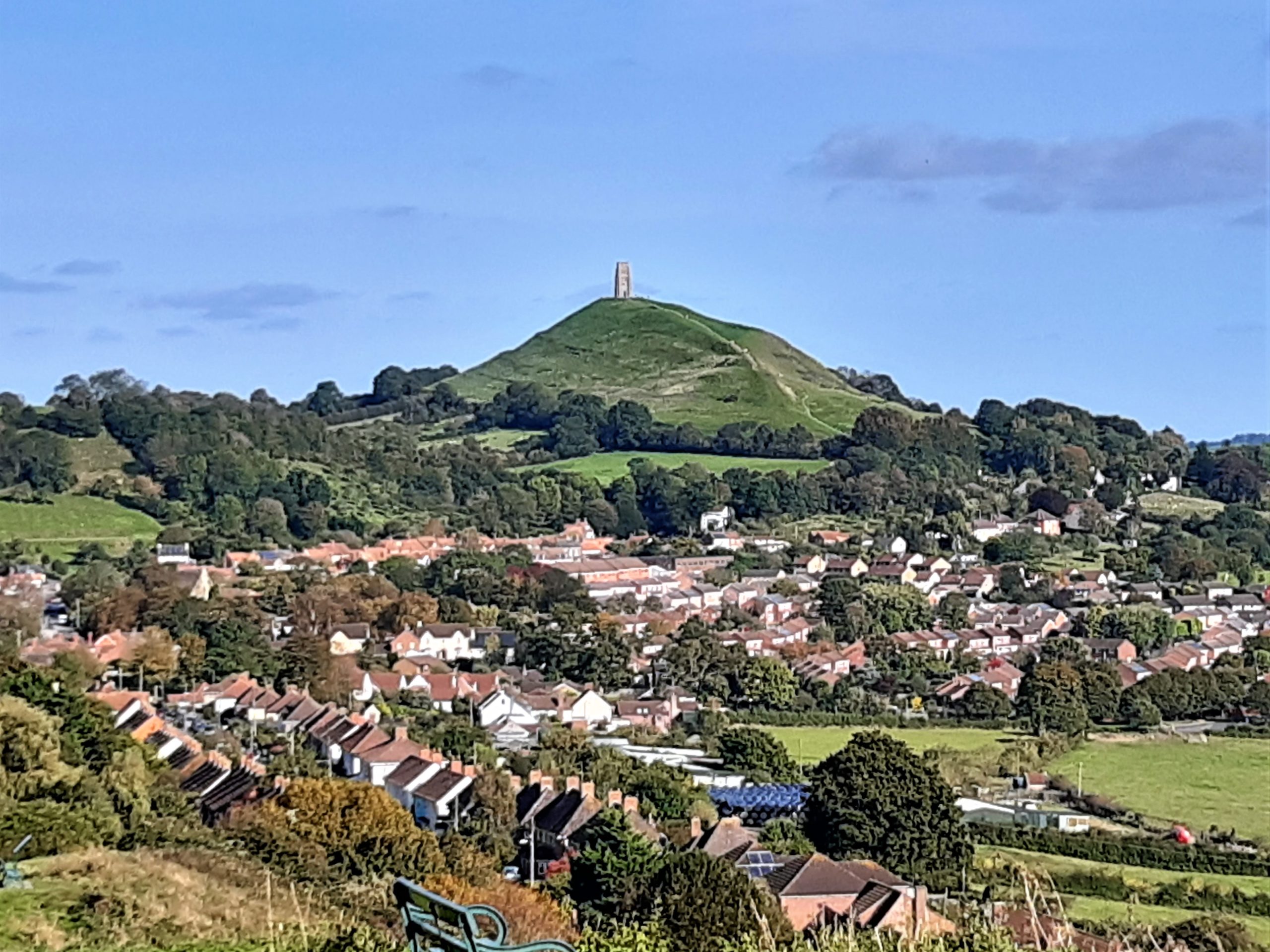
Glastonbury Tor
Two churches within the City of London are dedicated to St Dunstan. Just east of the City in Stepney is the ancient church of St Dunstan and All Saints. In Greater London there are a further seven churches dedicated to St Dunstan.
We explore the London links in more detail in the next blog post ‘St Dunstan in London and Somerset – Part 2: London.’ The focus in this post is on Dunstan’s life in Somerset which was then a part of the powerful Anglo-Saxon Kingdom of Wessex.
Dunstan: Real life and myths
Dunstan was born in the village of Baltonsborough, which sat high in the marshy Somerset Levels, a few miles south east of Glastonbury. He was the son of Heorstan, a Wessex nobleman. Heorstan was the brother of Athelm, the Bishop of Wells and later Archbishop of Canterbury and Aelfheath, the Bishop of Winchester.
His mother, Cynethryth, was a pious woman. Osbern’s Life of Dunstan relates that a mysterious messenger told her of the saintly child she would give birth to. Another story says how in church on ‘Candleday’ whilst she was pregnant, all of the candles went out except for Cynethryths. A sign that her baby would go on to become a minister of eternal light. Dunstan’s brother Wulfric became a reeve (bailiff) of the Glastonbury Abbey estates and a member of the royal court in Wessex.
This was clearly a well-connected family and it was no surprise when Dunstan went to be educated with Irish monks at the partially ruined Glastonbury Abbey (it had been severely damaged during Danish raids decades earlier). He was a devoted student, dedicated to religious learning and took minor orders.
When Athelstan became king in 925 Dunstan joined his court and continued his education there, but for reasons not wholly known was violently driven from court. Stories say jealous courtiers concocted a tall tale accusing Dunstan of witchcraft which ended with royal banishment, a violent beating and dunking in a cesspool. Fables of victimisation and persecution are setting Dunstan up nicely for sainthood.
Dunstan returned to Glastonbury as a monk where he housed himself in a tiny cell within St Mary’s Church. He lived as a hermit, spending time in study, prayer and the arts – especially silversmithing. Dunstan was said to have been covered in swellings, possibly as result of his involuntary swim in a cesspool. His violent banishment and unsightly appearance confirmed him in his religious vocation and no doubt his wish for isolation too.
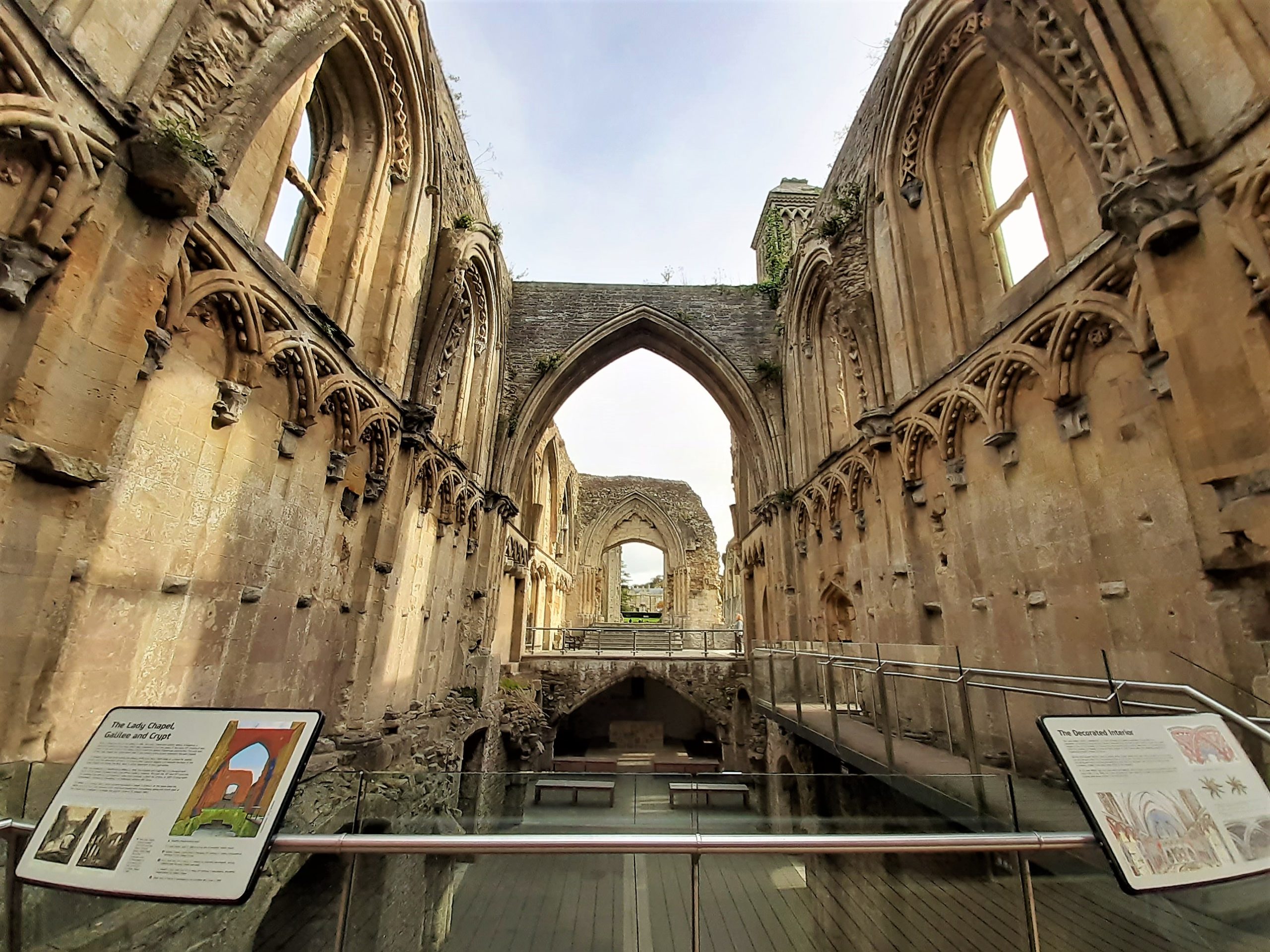
Glastonbury Abbey
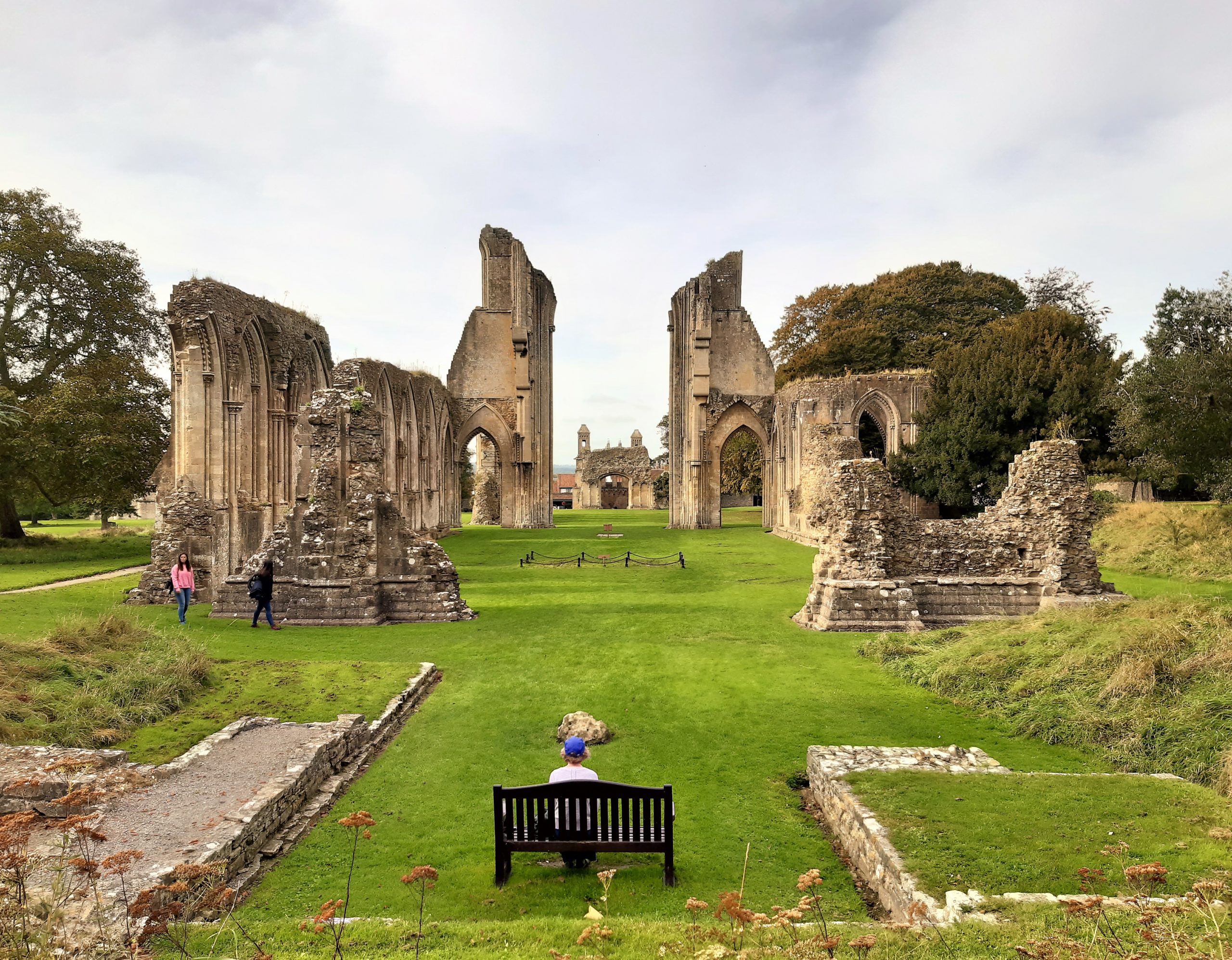
Glastonbury Abbey

St Dunstan praying before Christ. The text reads ‘Dunstanum memet clemens rogo Christe tuere, Tenarias me non sinas sorbsisse procellas’ (Remember, I beg you, merciful Christ, to protect Dunstan, and do not permit the storms of the underworld to swallow me up)
The myths surrounding Dunstan’s life continue. It’s said that whilst working at the forge in Glastonbury the devil came to visit Dunstan. There are two versions of this famous legend.
The first story says the devil came dressed as a beautiful young woman in order to tempt the saintly monk, but carelessly revealed his hooves below the hemline of his dress. Dunstan drove the devil away by grabbing his nose with red-hot tongs from the forge. Tongs are now Dunstan’s attribute and the old rhyme reminds us:
St Dunstan as the story goes
Once pulled the devil by the nose
With red hot tongs which made him roar
That he was heard three miles or more
The second version relates that the devil again came in disguise, this time as a man who asked for his horse to be reshod. But Dunstan recognised him and instead nailed the horseshoe to the devils’ own hoof so forcefully the devil begged for mercy. Dunstan released the devil on condition he never enter a house where a horseshoe is displayed near the door. From this legend we have the superstition of the lucky horseshoe.
Dunstan is the patron saint of goldsmiths and silversmiths. His feast day is the 19th May, which is still the date on which the English hallmark year begins.
Returning to Dunstan’s real life, when Edmund I succeeded Athelstan as king of Wessex he recalled Dunstan and made him a minister. But jealous courtiers once again conspired against Dunstan. Edmund was ready to banish Dunstan but in a miraculous ‘intervention’ the spirit of Dunstan saved the king from death by plummeting off a gorge in Cheddar, whilst out hunting. Instead, Edmund made Dunstan the Abbott at Glastonbury Abbey where he established Benedictine orders, undertook the rebuilding of the Abbey and extended the draining of the Somerset Levels.
He continued to advise the royal house of Wessex through Edmunds reign and his successor King Eadred. But he fell out of favour with the next king, Eadwig and in 955 he fled to safety in Flanders. The next king Edgar recalled Dunstan and made him Bishop of Worcester in 957. In 958 he became Bishop of London (see Part 2) and in 959 he was made Archbishop of Canterbury.
Dunstan’s influence now became lasting, even up until today. He clamped down on church corruption and ‘unholy’ monks, established new monasteries and at the coronation of King Edgar at Bath in 973 devised and presided over an ‘imperial’ ceremony which forms the basis of the monarch’s coronation ceremony today. Edgar had become king of the English in 959 but Dunstan’s ceremony in Bath established Edgar as the ‘overlord’ of all the kings on mainland Britain.
Dunstan died on 19th May 988, having been foretold his death by a vision of angels, and was buried in Canterbury Cathedral. He was canonised in 1029 when his feast day of 19th May was established. His tomb was destroyed during the Reformation.
Dunstan’s church.
St Dunstan’s Church in Baltonsborough was built in the 1400s to honour the villages most famous son and is visible across the moors. Many original features survive although like most old churches a lot of repair and redecoration has taken place through the centuries.
The churchyard was enclosed by a stone wall in the 1820s. The church’s gothic stone tower is topped by an elaborate ironwork weather vane of scrolled wrought iron with a three-dimensional cock, which stands on a pyramidal lead cap. It was crafted by the local blacksmith in 1837 replacing a previous one destroyed during a storm. St Dunstan is also patron saint of blacksmiths.
A local myth says that if the village children run around the church nine times the ghost of St Dunstan will appear.
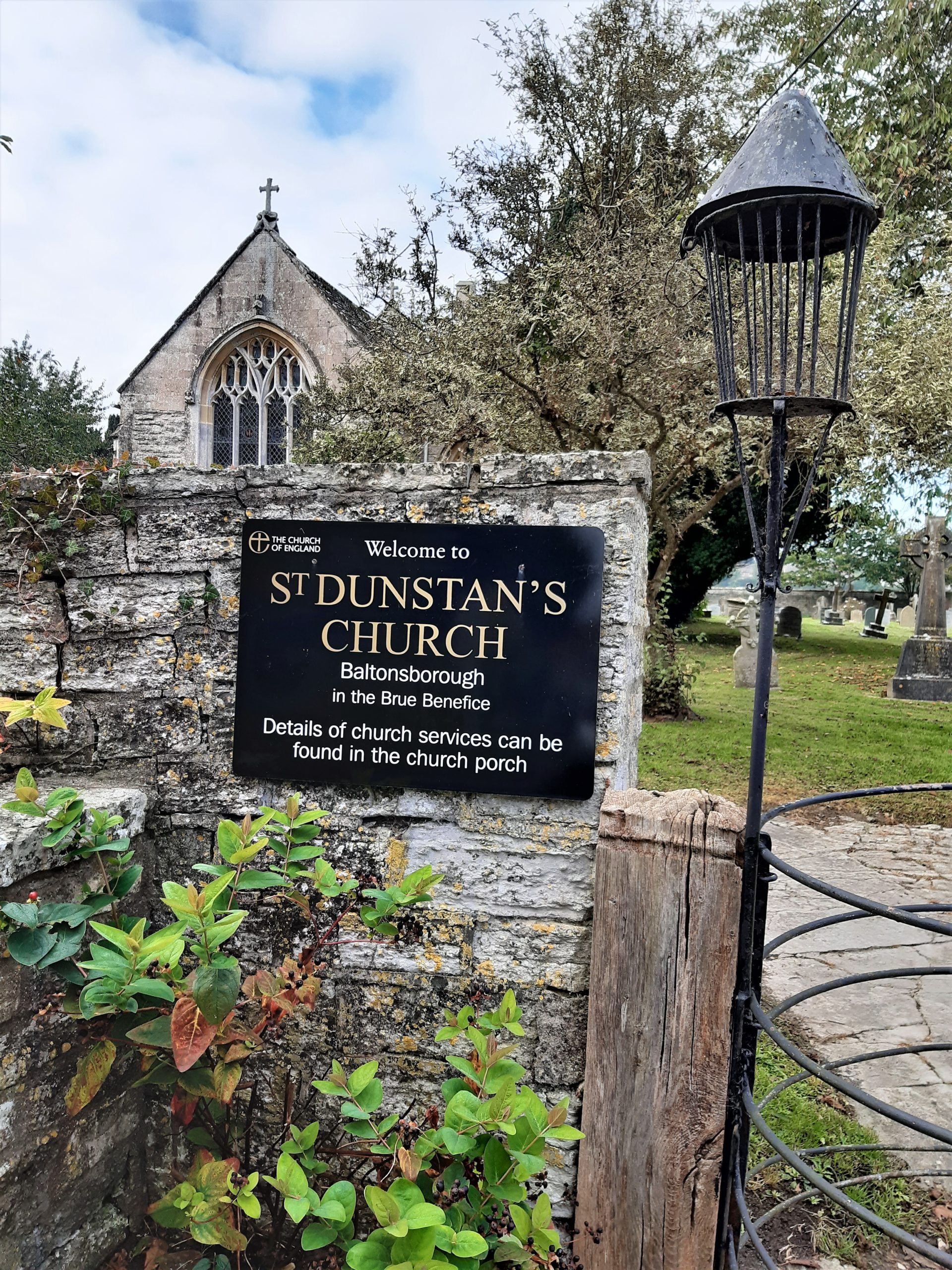
St Dunstan’s Church, Baltonsborough
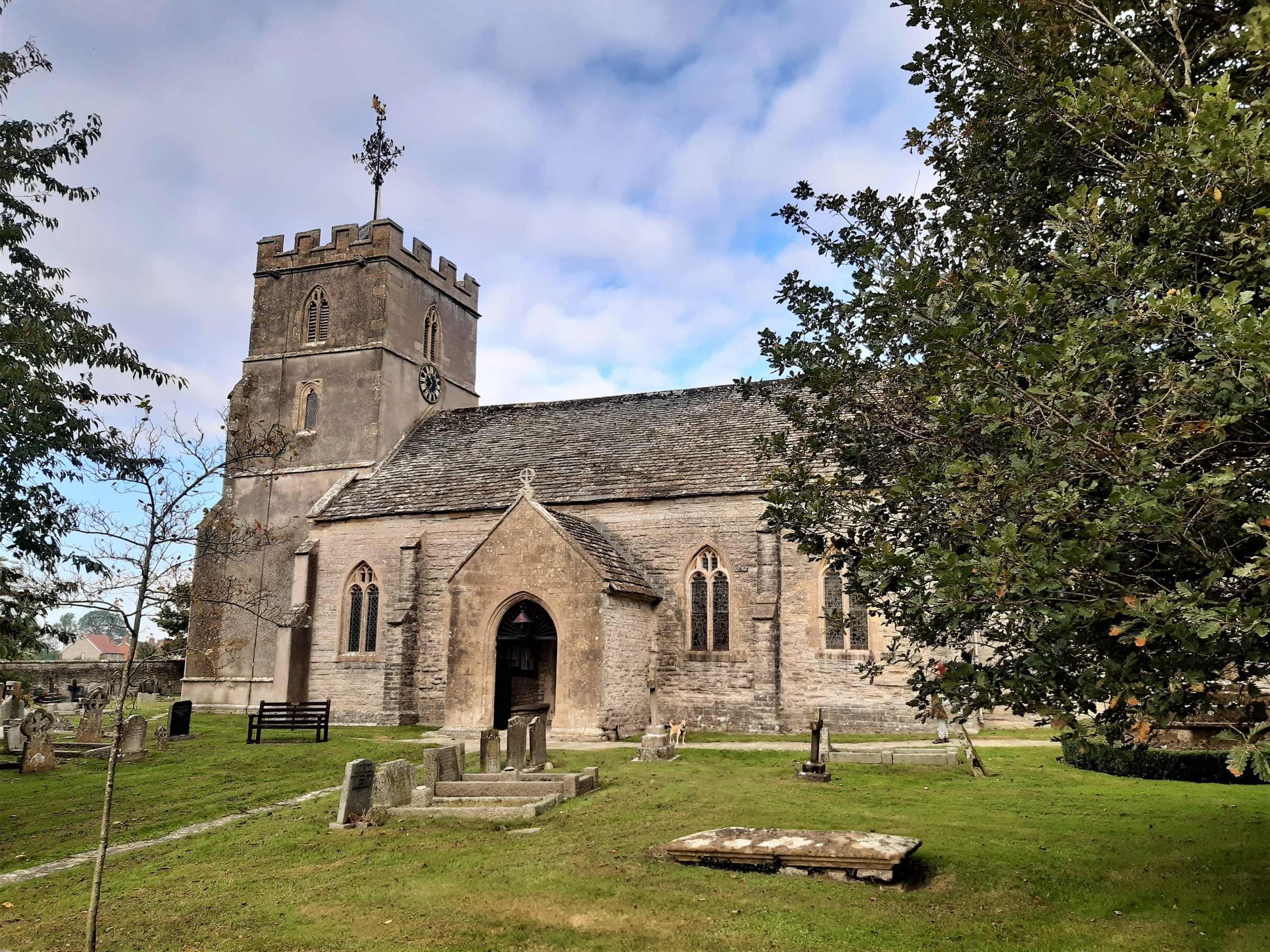
St Dunstan’s Church, Baltonsborough, Somerset
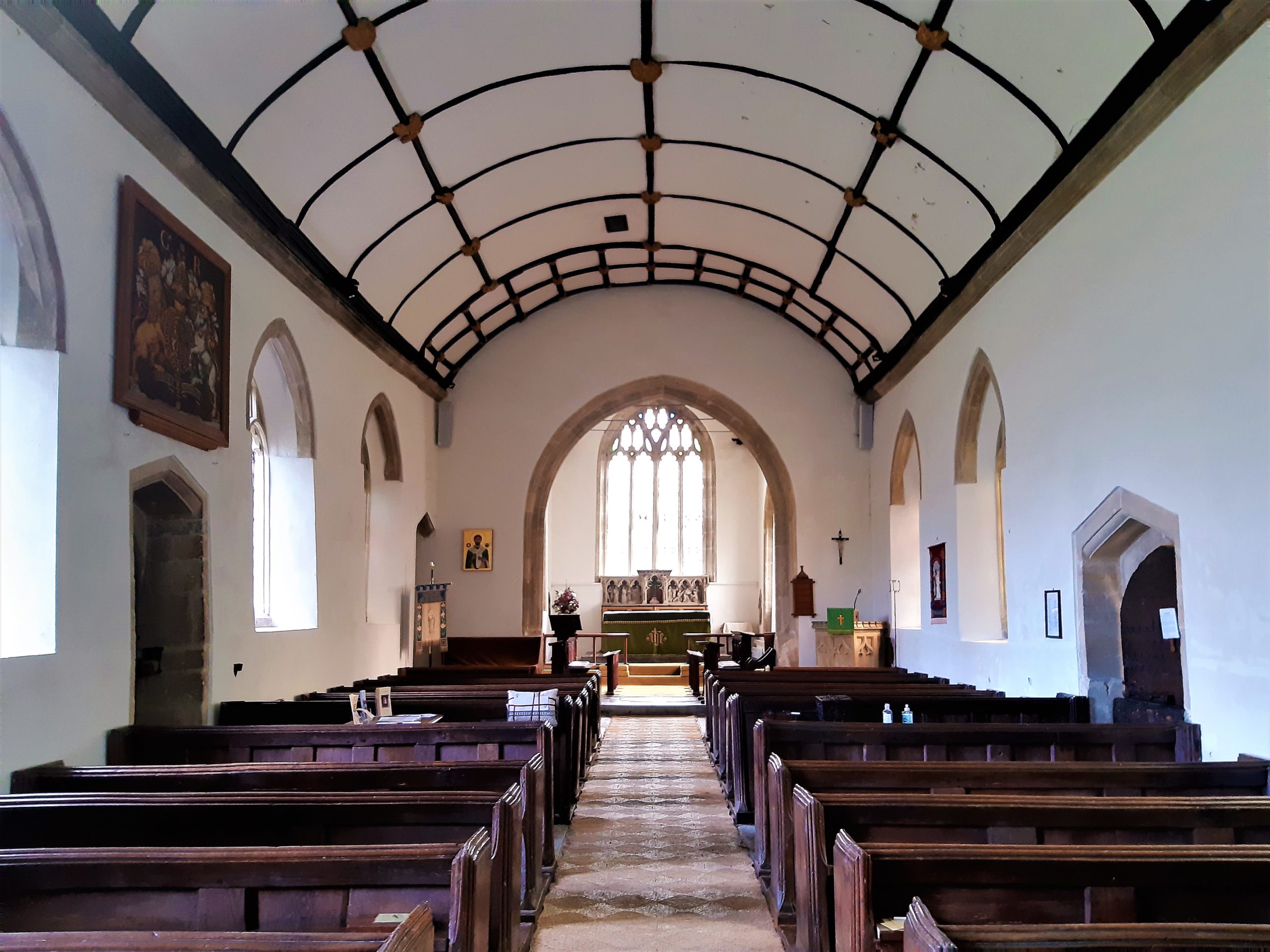
St Dunstan’s Church, Baltonsborough, Somerset
